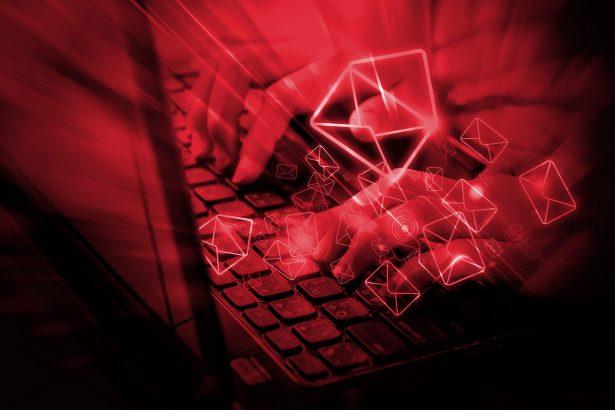Phishing scams are deceptive tactics used by cybercriminals to trick individuals into divulging sensitive information, such as login credentials or financial details. These scams often take the form of emails or messages that appear to be from legitimate organizations but are designed to deceive and exploit unsuspecting recipients. The general purpose of these scams is to gain unauthorized access to personal information or to install malware on the victim’s system.
Phishing scams can infiltrate systems through various methods, often involving emails that appear to come from trusted sources. Once a victim interacts with the fraudulent content—such as clicking a malicious link or opening an infected attachment—the threat can compromise their system. The primary risks include unauthorized access to personal data, financial loss, identity theft, and further malware infections.
“Is Visiting a More Convenient Way to Reach Email Scam”
The phishing scam detailed in the article from PCRisk is an example of a scam where the attackers use deceptive emails to lure victims into a trap. The email in question is sent from a seemingly legitimate address, which can often be designed to resemble an official domain. The message may instruct the recipient to click on a link or download an attachment under the guise of providing important information or a convenient way to reach support.
Email Details and Instructions
- Sender’s Email Address: The phishing email is sent from an address that may closely resemble that of a legitimate organization but often includes slight alterations or misspellings. For example, it might come from an address like
support@secur1ty-update.cominstead of a trustedsupport@security-update.com. - Instructions: The email typically instructs the recipient to click on a link or download an attachment to receive important updates or resolve an urgent issue. The message may use persuasive language to create a sense of urgency, prompting the recipient to act quickly without thoroughly verifying the sender’s legitimacy.
Purpose of the Scam
The primary goal of this phishing scam is to deceive recipients into providing personal information or credentials that can be used for identity theft or financial fraud. Additionally, by clicking on the malicious link or downloading the attachment, victims may inadvertently install malware on their systems, which can further compromise their security.
Common Encounters and Prevention
Victims of this scam may have encountered it due to a recent increase in phishing attempts targeting specific sectors, such as online banking or email services. Common reasons for encountering such scams include:
- Unsolicited Emails: Receiving unexpected emails that request personal information or direct you to unfamiliar websites.
- Suspicious Links: Clicking on links in emails that direct you to unfamiliar or suspicious websites.
- Urgent Language: Emails that create a sense of urgency or pressure to act quickly.
To avoid falling victim to similar scams in the future, always verify the legitimacy of the sender before clicking on links or downloading attachments. Check for spelling mistakes in the email address, scrutinize the content for inconsistencies, and use official channels to contact organizations if you have any doubts.
Removal Guide
If your system has been infected by malware due to this phishing scam, follow these detailed steps to remove the threat:
- Disconnect from the Internet: To prevent further data transmission and reduce the risk of additional infections, disconnect your computer from the internet.
- Enter Safe Mode: Restart your computer and enter Safe Mode by pressing
F8(or the appropriate key for your system) during startup. Safe Mode will load only essential system files, making it easier to remove malware. - Run a Full System Scan: Download and install a reputable anti-malware tool, such as SpyHunter, and run a comprehensive scan of your system. SpyHunter will detect and remove any malicious files or programs associated with the phishing scam.
- Manually Remove Suspicious Files:
- Open Task Manager by pressing
Ctrl+Shift+Esc. - Look for any unfamiliar or suspicious processes, right-click on them, and select “End Task.”
- Navigate to the folder where the malware was detected (usually in the Temp directory or Program Files) and delete any suspicious files.
- Open Task Manager by pressing
- Check Browser Extensions: Open your web browser and remove any unfamiliar or suspicious extensions or add-ons that may have been installed by the malware.
- Change Your Passwords: After ensuring your system is clean, change passwords for all your online accounts, especially those that may have been compromised.
- Update Your Security Software: Ensure that your anti-malware and operating system are up to date with the latest security patches and updates.
Further Actions and Prevention
To avoid future phishing scams:
- Educate Yourself: Stay informed about common phishing tactics and how to recognize them.
- Use Strong Passwords: Employ complex, unique passwords for each of your accounts.
- Enable Two-Factor Authentication: Add an extra layer of security to your accounts by enabling two-factor authentication (2FA) wherever possible.
- Regular Backups: Keep regular backups of important data to mitigate the impact of potential future infections.
For enhanced protection, consider downloading SpyHunter to scan your system for free and detect any potential threats.
Text presented in the "Is Visiting A More Convenient Way To Reach" spam email letter
***********
Is visiting ******** a more convenient way to reach in case you don't act
Have been here before?
I suggest you read this message carefully. Take a minute to relax, breathe, and really dig into it. 'Cause we're about to discuss a deal between you and me, and I don't play games. You don't know me but I know ALOT about you and you must be wondering how, correct?
Well, You've been treading on thin ice with your browsing habits, scrolling through those filthy videos and clicking on links, stumbling upon some not-so-safe sites. I actually placed a Spyware called "Pegasus" on a app you frequently use. Pegasus is a spyware that is designed to be covertly and remotely installed on mobile phones running iOS and Android. And while you were busy enjoying those videos, your smartphone initiated working as a RDP (Remote Control) which allowed me complete control over your device. I can look at everything on your display, flick on your cam and mic, and you wouldn't even suspect a thing. Oh, and I've got access to all your emails, contacts, and social media accounts too.
What did I do?
Been keeping tabs on your pathetic life for a while now. It's just your bad luck that I discovered your bad deeds. I gave in more days than I probably should have exploring into your personal life. Extracted quite a bit of juicy info from your system. and I've seen it all. Yeah, Yeah, I've got footage of you doing embarrassing things in your room (nice setup, by the way). I then developed videos and screenshots where on one side of the screen, there's whatever garbage you had been playing, and on the other half, its someone jerking off.
With simply a click, I can send this garbage to every single of your contacts.
What should you do?
I see you are getting anxious, but let's get real. In good faith, I want to wipe the slate clean, and allow you to continue with your life and forget you ever existed. I am about to offer you two options. Either ignore this warning (bad for you and your family) or pay me a small amount. Let us examine those two options in details.
Alternative one is to turn a deaf ear my e mail. Let us see what will happen if you opt this option. I will send your video to all of your contacts. The video was lit, and I can't even fathom the humiliation you'll endure when your colleagues, friends, and fam check it out. But hey, that's life, ain't it? Don't be playing the victim
Wise Second Option is to pay me, and be confidential about it. We'll call it my "privacy charges". Lets discuss what happens if you opt this choice. Your dirty secret will remain private. I'll destroy all the data and evidence once you send payment. You have to make the payment via Bitcoin only. Pay attention, I'm telling you straight:
'We gotta make a deal'. I want you to know Im coming at you with good intentions. My promises are non-negotiable.
Transfer Amount: USD 1950
My BTC Address: 1NSaKPShj9t3rWVQBUit7VhBWmXUY8HHyC
Or, (Here's your Bitcoin QR code, you can scan it):
Let me tell ya, it's peanuts for your tranquility.
Important: You got one day to sort this out. (I've a unique pixel within this e-mail, and right now I know that you have read this email message). My system will catch that Bitcoin payment and wipe out all the dirt I got on you. Don't even think about replying to this, it's pointless. The email and wallet are custom-made for you, untraceable. I don't make mistakes, Robert. If I suspect that you've shared or discussed this email with anyone abu, these or view is any se geting sept your contacts. And don't even think about tuming off
Honestly, those online tips about covering your camera aren't as useless as they seem.
Don't dwell on it. Take it as a little lesson and keep your guard up in the future.




